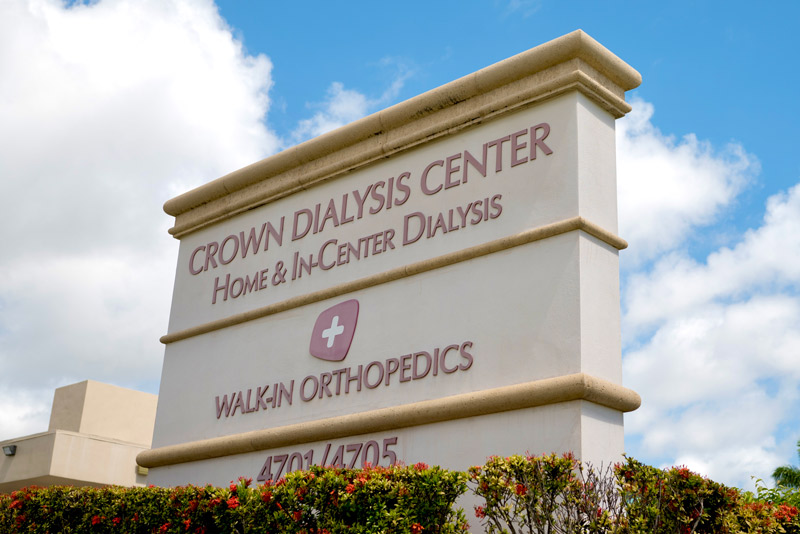WHO CAN PROVIDE PATIENTS WITH INFORMATION AND ADDITIONAL SUPPORT?
Your on-site Renal Social Workers can provide information about support groups in the area where patients live. The patients will have the opportunity to learn more about renal disease management treatment.
WHO CAN PATIENTS CALL ABOUT THEIR NUTRITION AND DIET?
Our dialysis team includes a Renal Dietician who will provide a personal consultation for patients and work with your healthcare providers in meeting patients’ dietary & personal health needs. This includes providing you with lists of nutrition facts and healthy recipes.
HOW DOES CROWN DIALYSIS CENTER (CDC) ENSURE THAT THE PATIENT RECEIVES THE SAFEST, MOST RELIABLE CARE POSSIBLE?
Screenings and background checks, including criminal records, drug screening, DMV, licensure & references, are performed for all CDC personnel.
WHAT IF SOMETHING HAPPENS WHILE THE PATIENT IS DIALYZING AT HOME?
Even though the patient is at home, the patient is never alone. Our facility has a call service 24 hours a day, 7 days a week. A home health professional is just a phone call away. If, however, a complication does occur, the patient or partner may always call 911 immediately or contact the physician directly. If the patient is doing HHD or home PD, the caregiver will assist with any problems.
WILL MEDICARE COVER THE COST OF HOME DIALYSIS?
Medicare pays for Peritoneal Dialysis cost , supplies and training, do not pay for Nurse Assisted Home Hemodialysis. The cost for nurse assisted home dialysis can be cover by Private, Commercial Health Insurance or self-pay.
WHAT OTHER INSURANCES COVER THE COST OF HOME DIALYSIS?
Other sources that help pay for dialysis include private or commercial insurance or some managed care organizations, Medicaid, and Veterans administration. If a patient has an employer group health plan, this will be the primary coverage for the first 30 months of treatment with Medicare as the second insurer. After those first 30 months, Medicare will become the primary insurer.
WHY PERITONEAL DIALYSIS?
PD is associated with patient survival advantages when compared with HD during the first 2 years on dialysis.2–9 Unlike saw-tooth treatment with HD, PD delivers a more steady-state treatment, avoiding fluctuations in plasma volume and solutes, and is generally better tolerated by the patients with cardiovascular compromise. PD provides flexible schedules, thus allowing patients to work, travel, and participate in daytime activities. As PD does not involve needlesticks, patient anxiety is mitigated, arteriovenous access sites for future HD are preserved, and the risk of acquiring blood-borne infections such as hepatitis C and HIV are minimized. Additionally, residual renal function (RRF) is better preserved on PD than HD7–13 and is associated with improved outcomes. Furthermore, patients on PD have better long- and short-term transplant outcomes. Recent data suggest that compared with HD, PD patients have significantly lower incidence of delayed graft function, significantly lower requirement of dialysis in the post-transplant period, and better long-term transplant survival.7, 14–16 Moreover, PD is less expensive than HD on a per-patient per-year basis, with the difference estimated to be more than $20,000 based on the 2010 U.S. Renal Data System (USRDS) annual data report.1Despite these advantages and lower costs, the number of patients on PD in the United States has progressively declined over the past 10 years17, 18 to below 7% of the total U.S. dialysis population, compared with other developed countries, where PD is being utilized in a much larger (15-30%) proportion of the dialysis population.1The reasons for low utilization of PD in the United States are complex, but seem to be influenced by psychosocial and economic factors, lack of physician, surgeon, and nursing training, physician bias, and inadequate pre-ESRD education to the patients (Table I). Several of these factors are modifiable, and with a concerted effort PD utilization can be significantly increased.

